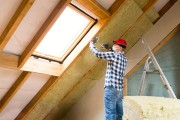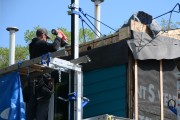The 2020s have been tumultuous. Kicked-off by a global pandemic, the last few years are described as an era of “polycrisis” — with people facing numerous, often interconnected global crises. Geopolitical conflict, increasing social inequality, the ever-worsening impacts of climate change — and now, economic instability via turbulent trade dynamics with a global superpower.
Canada’s response to the latter has been swift. Passage of Bill C-5 last month signalled the Carney government’s urgent and ambitious approach to facing the economic headwinds. Many voices — including ours at the Pembina Institute — have warned about the bill’s sweeping powers, and the risks around inadequate Indigenous consultation and environmental assessments. Ultimately, it passed — and ultimately, we support what the bill is purportedly trying to achieve: identifying and accelerating responsible, strategic nation-building projects that set Canada up for long-term economic resilience, while upholding Indigenous rights and doing our share to address the climate crisis.
But simply speeding up approvals for a few infrastructure projects does not build us a new country. Going bigger and broader — focusing on infrastructure that could directly improve the lives of literally every Canadian and aiming to help solve numerous crises at once — now that’s smart, strategic and forward-thinking nation-building.
Canadians deserve energy choices that cut costs and build a cleaner, more reliable future. Clean electrification and energy efficiency reduce ownership costs, strengthen the electricity grid, and improve health and climate outcomes — unlocking investment, boosting exports, and making us a stronger nation.
There’s a nation-building initiative waiting in the wings that speaks to how Canadians use energy, every day, and with the potential to help this country address several components of the “polycrisis” in which we find ourselves.
Fed should prioritize retrofitting existing buildings
Retrofitting our homes and buildings is a high-return investment that provides our families and businesses with healthier, safer indoor spaces, more resilient to severe weather events, and more affordable to heat and cool. As Canada moves to launch major nation-building projects, we should prioritize retrofitting the buildings that Canadians already use — the majority of which will still stand in 2050.
Building retrofits open the door for “made-in-Canada” energy resources, like demand-side energy resources (rooftop solar, battery storage, or shifting energy use to lower-use times) and improved energy efficiency. Investments in energy efficiency and demand-side resources create long-term, local jobs. They also attract capital from the industries of tomorrow, and help advance our economic and climate goals. Investments in retrofitting buildings can generate $7 in GDP growth for every $1 invested.
What if we looked at nation-building not only via single projects, with a primary proponent, location, and outcome? What if we developed nation-building programs — like retrofits for multifamily units — addressing many societal needs at once, and in the process creating a wave of economic activity, including new Canadian industries and supply chains?
Here’s how it could look:
Federal funding could help expand repayable no-interest loans, and modified rules could increase private capital and ensure mortgage terms and insurance rates are more favourable when homes are retrofit (and built) to a resilient, healthy, low-carbon standard. Standards that save residents money for decades, also helping establish beachhead markets where early adopters thrive, demonstrating the economic and environmental value of high-performance buildings.
Special programming could target social, below-market housing, especially low–rise, multi–unit residential buildings built in the 1950s, 1960s and 1970s.
Provincial governments and their energy regulators could expand utilities’ ability to buy energy services from customers. Unlocking new revenue streams from demand-side energy resources cuts the utility’s operational costs and improves energy reliability (fewer blackouts) while contributing to the business case for building owners.
Canada’s building retrofit rate is estimated to be well below one per cent per year. At that pace, it would take over a century to upgrade the entire building stock — far too slow to meet Canada’s housing needs. These market-based incentives could maintain a five per cent annual retrofit rate, generating over $48-billion in economic development annually and creating up to 200,000 long-lasting, well-paid jobs. Policy and programs evolve over time, enabling service providers, construction companies, product manufacturers, and supply chains to scale up and invest in expanding their businesses – eventually providing the basis for new export industries.
That’s real nation-building. And it’s within reach.










